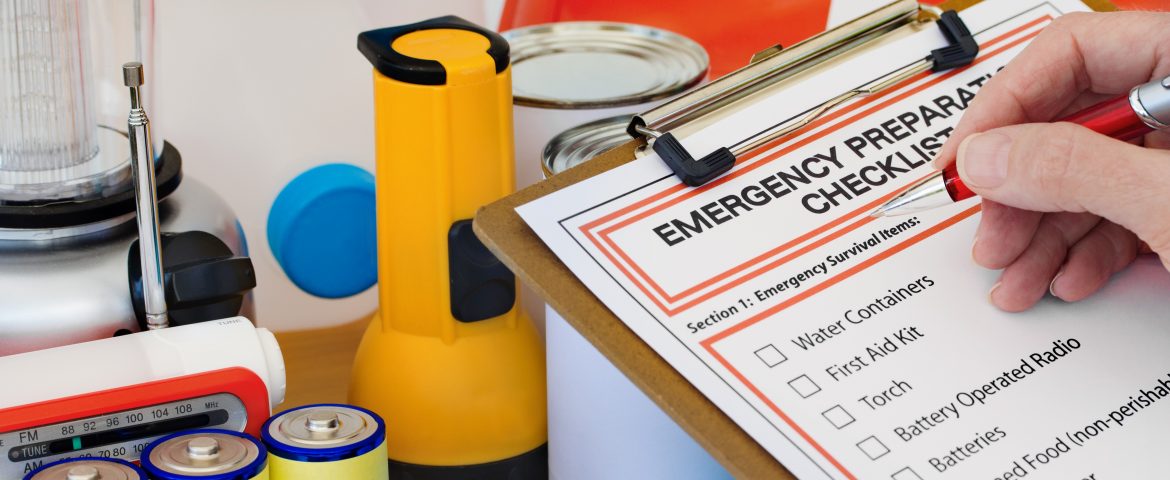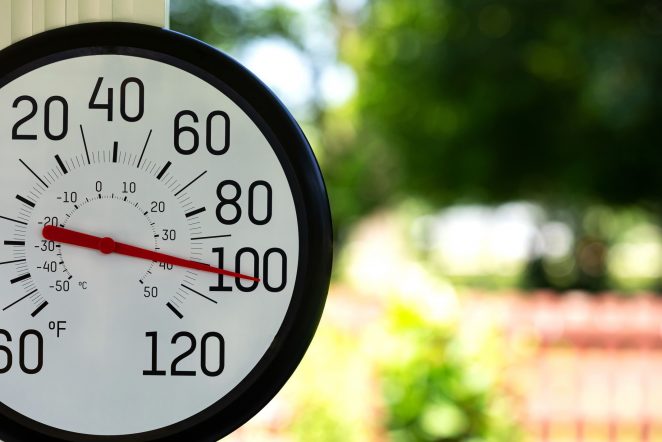If the COVID-19 pandemic taught Americans anything, it’s that being ready for an emergency is smart planning — and it involves more than just stocking up on paper products. Did you know that 48% of Americans say they do not have access at home to all of the necessary supplies they would need in an emergency?
If you’re one of those 48%, this checklist can serve as a good starting point for making sure your home is set for any kind of emergency. This could be a power outage, a statewide shutdown, a natural disaster or just a minor illness in the family.
1. Food.
Experts recommend stashing at least three days-worth of food for your family in case of a massive power outage or other natural disaster. It doesn’t have to be gourmet! Frozen or canned foods with a longer shelf-life are great to have on hand. For example, stock up on these affordable and healthy pantry staples when you catch them on sale.
2. Pet food.
Don’t forget about the pets – have three days-worth of food for Fido or your Feline (or Fish) too! Check out online “subscribe and save” services to save time and money. Many pet stores and other retailers will offer automatic delivery of your pet’s favorite chow.
3. Drinking water.
For all the humans and animals at your place — at least three days of drinking water is also important to have on hand if the power goes out, there are big storms or any other emergency. Whether bottled or filtered, store it in an easy-to-reach place. If you notice a sale on bottled water this summer, stock up. Bottled water can last a couple of years. Or try one of these small filters avid hikers and campers love to keep handy.
4. First aid supplies.
Any household should have some basic first aid supplies and if your home base includes kids and pets, first aid kits are an even better idea. The American Red Cross recommends keeping a kit both in your home and in your car — and always know where one is located at your workplace.
For the kits in your home and car, include any personal items such as medicine you regularly take. Check the kit regularly for expiration dates and replace any used or out-of-date contents.
You can buy ready-made first-aid kits at many drugstores or assemble your own. You may want to tailor your kit based on your activities and needs. A first-aid kit might include:
Basic supplies
- Adhesive tape
- Elastic wrap bandages
- Bandage strips and “butterfly” bandages in assorted sizes
- Super glue
- Nonstick sterile bandages and roller gauze in assorted sizes
- Eye shield or pad
- Large triangular bandage (may be used as a sling)
- Aluminum finger splint
- Instant cold packs
- Cotton balls and cotton-tipped swabs
- Disposable nonlatex gloves
- Petroleum jelly or other lubricant
- Plastic bags, assorted sizes
- Safety pins in assorted sizes
- Scissors and tweezers
- Hand sanitizer
- Antibiotic ointment
- Antiseptic solution and towelettes
- Eyewash solution
- Thermometer
- Sterile saline for irrigation, flushing
- Disposable face masks
- Syringe, medicine cup or spoon
- Hydrogen peroxide to disinfect
- First-aid manual
Medications
- Aloe vera gel
- Calamine lotion
- Anti-diarrhea medication
- Laxative
- Antacids
- Antihistamine, such as diphenhydramine
- Hydrocortisone cream
- Cough and cold medications
- Over-the-counter allergy medications
- Personal medications that don’t need to be refrigerated
- Auto-injector of epinephrine, if prescribed by your doctor
- Pain relievers, such as acetaminophen (Tylenol, others), ibuprofen (Advil, Motrin IB, others), and aspirin. Aspirin an be life-saving for an adult with chest pain, but never give aspirin to children or don’t take if allergic – always call 911 or go to the nearest emergency room if experiencing any chest pain.
Emergency items
- Emergency phone numbers, including contact information for your family doctor and pediatrician, local emergency services, emergency road service providers, and the poison help line (in the U.S. the number is 800-222-1222.)
- Health insurance card and account information (Priority Health members can access anytime in their online member account or app — log in here. Assist America ® travel emergency services are also available to members who are traveling more than 100 miles away from home. Learn more here.)
- Medical consent forms for each family member
- Medical history forms for each family member
- Small, waterproof flashlight or headlamp and extra batteries
- Waterproof matches
- Small notepad and waterproof pen
- Emergency blanket
- Cell phone with solar charger
- Sunscreen
- Insect repellant
Other helpful items to have on hand include clean masks for everyone in the family, tissues for covering your mouth when coughing, soap or sanitizer for frequent handwashing, and cleaning supplies for disinfecting.
5. Medications.
Emergency planning pros say it’s smart to have at least a week’s supply of any medications you and your family members take regularly. However, you can ask your doctor to write a prescription for a 90-day supply or try a mail-order service that offers 90-day refills. Your insurance company may also allow early refills for any necessary medications, depending on your plan. Take advantage of pharmacies offering free home delivery for prescriptions. For example, Priority Health members can get free home delivery through retail and local pharmacy vendors including CVS, Walgreen’s ExpressTMand Meijer.
6. A portable charger.
For your phone or other necessary electronics, you’re going to need the battery to last — especially during a power outage. We rely so much on our phones and devices for important information and entertainment, but you also want to be able to contact others and call for help if you need it. Have a few extra battery-powered chargers that are fully charged at the ready — and consider investing in a solar charger for prolonged power outages. This is especially important if your home does not have a generator.
7. Lighting options.
Speaking of power outages — nobody wants to be left in the dark for too long. Candles are lovely, but can quickly become dangerous. In fact, the Red Cross recommends flameless, battery operated candles instead that glow with a light bulb instead of an open flame — eliminating any danger from kids or pets knocking over the flame (in general, always keep matches and lighters out of reach and use lighters with child-resistant features.)
You should have a small, waterproof flashlight or headlamp and extra batteries on-hand for emergencies. And if your home is not equipped with a generator, having a few battery-powered lanterns are good to light up larger rooms.
8. Copies of important documents.
This could be Driver’s License, I.D. cards or passports, social security cards and birth certificates, insurance cards (Priority Health members can access their insurance cards anytime in their online member account or app — log in here.), important phone numbers, medication instructions, medical history etc. If you don’t have a digital copy or your phone or other devices lose power, a hard copy of these important records is always a good idea as a back-up plan. Experts recommend both secure (password-protected) digital storage and a fireproof safe for these documents. You can find several affordable safe options online.
9. Fire extinguishers and smoke detectors.
Fire safety is always extremely important for prevention, but unfortunately accidents happen, often in the kitchen or garage. Having some small, easy-to-store and use fire extinguishers around the house (kitchen, furnace room and garage) is a must for emergency preparedness.
And don’t forget to install smoke alarms on every level of your home, including inside bedrooms and outside sleeping areas. Test alarms regularly: The Red Cross recommends testing smoke alarms every month if possible. If they’re not working, change the batteries or replace any broken smoke detectors.
The pandemic of 2020 and the winter 2019 “polar vortex” took many people by surprise. Don’t let an emergency, no matter how big or small, throw your health and safety off course. Make sure you have access to all of these items and see even more smart planning suggestions from the CDC here.


